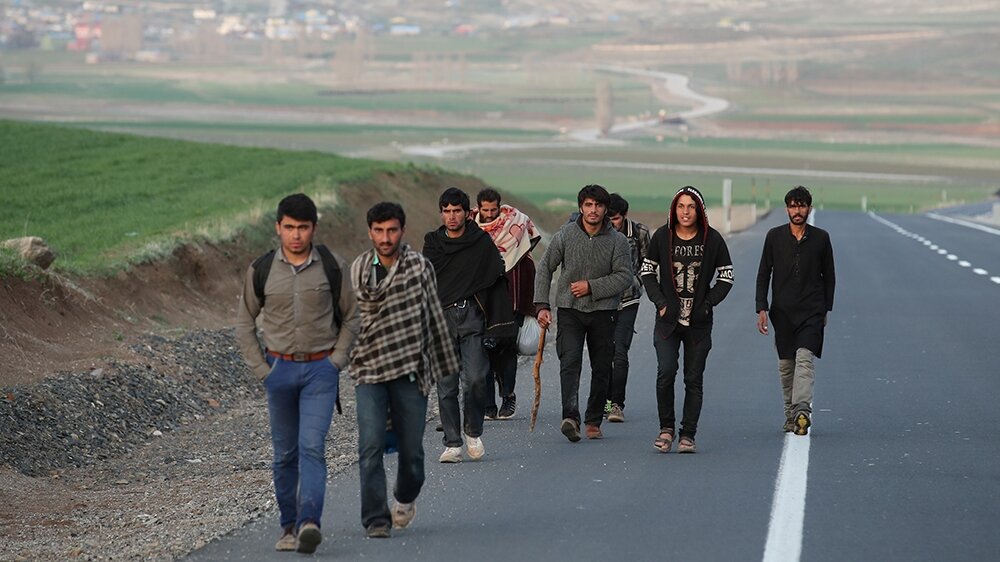Iran among top 20 Asian migrant countries

TEHRAN – Iran was placed 16th among the top 20 Asian migrant countries in 2019, and the fifth top country by total refugees and asylum seekers in 2018, according to the 2020 World Migration report released by International Organization for Migration (IOM).
The overwhelming majority of people migrate internationally for reasons related to work, family, and study– involving migration processes that largely occur without fundamentally challenging either migrants or the countries they enter.
In contrast, other people leave their homes and countries for a range of compelling and sometimes tragic reasons, such as conflict, persecution, and disaster. While those who have been displaced, such as refugees and internally displaced persons (IDPs), comprise a relatively small percentage of all migrants.
The current global estimate shows that there were around 272 million international migrants in the world in 2019, which equates to 3.5 percent of the global population.
In 2019, most international migrants (around 74%) were of working age (20 to 64 years of age). Europe and Asia each hosted around 82 million and 84 million international migrants, respectively – comprising 61 percent of the total global international migrant stock combined.
International Migrants Day
In 1990, the General Assembly adopted a resolution on the International Convention on the Protection of the Rights of All Migrant Workers and Members of Their Families.
Each year on December 18, International Migrants Day is marked to highlight the contributions made by the roughly 272 million migrants, including more than 41 million internally displaced persons (IDPs), and the challenges they face.
The observance of International Migrants Day 2020 focuses on the stories of social cohesion, which are as varied and unique as each of the whole migrants worldwide.
Iran among top 10 refugee-hosting countries
However, Asia experienced the most remarkable growth from 2000 to 2019, at 69 percent (around 34 million people in absolute terms).
In 2018, for the fifth consecutive year, Turkey was the largest host country in the world, with 3.7 million refugees, mainly Syrians (over 3.6 million). Pakistan and Iran were also among the top 10 refugee-hosting countries, as the two principal hosts of refugees from Afghanistan, the second-largest origin country.
Most notably, at the end of 2018, there were 2.7 million Afghan refugees, the second-largest refugee population in the world after the Syrian Arab Republic, and 2.6 million Afghan IDPs. The neighboring countries of Pakistan and Iran hosted the most Afghan refugees and, accordingly, featured among the top host countries in the world.
At the end of 2018, Iran hosted close to 1 million refugees, making it the sixth-largest refugee host country in the world.
Iran also was the eighth largest refugee-hosting country in the world in 2019, hosting 951,142 Afghan refugees and 28,268 Iraqi refugees, according to the UNHCR.
Inclusive refugee policies
Iran hosts one of the largest and most protracted urban refugee populations in the world with 97% of them living in urban and rural areas while the remaining 3% residing in 21 settlements managed by the Bureau for Aliens and Foreign Immigrants Affairs (BAFIA).
Iran is going through a challenging economic period as a result of the evolving international environment linked to the country and the region in general. This situation poses a further strain on national resources as well as on refugees and their host communities, presenting a number of challenges for the country.
Despite the prevailing economic situation, Iran is committed to continue with a number of inclusive refugee policies that were introduced in recent years; facilitating access for all foreign children residing in Iran to enroll in public schools, access for all refugees to enroll in the national Universal Primary Health Insurance (UPHI), and access to legally engage in livelihoods opportunities through attaining temporary work permits.
Foreign nationals in Iran
Many of the refugees living in Iran are the second and third generation, according to the UNHCR.
In addition to Afghan refugees, there are about 2.5 million Afghans living in Iran, including those having a passport and undocumented Afghans. 450,000 Afghan who did not have identity cards or birth certificates have received Iranian visas that allow them to live, work or study in the country.
There are 40,000 Afghan students in the country, according to the official report, 17,000 of them are graduated, while the unofficial report is estimated at 26,000.
Some 47,000 people were trained and 10 percent of legal refugees were covered by social insurance with the help of the UNHCR, and other foreign nationals can pay for health insurance like Iranians.
In light of the COVID-19 pandemic, undocumented Afghans who have access to free primary health services and similarly free COVID-19 related testing, treatment, and hospitalization, just like nationals.
Reducing statelessness
Although Iran is not a party to the UN Conventions on Statelessness, the Government of Iran is taking steps towards the prevention and reduction of statelessness in the country.
In October 2019, the Guardian Council ratified a bill amending the law on conferring citizenship on children born to an Iranian mother and a foreign father regardless of where they are born.
According to article one of the law, children of Iranian women and non-Iranian men who were born before or after the law can be an Iranian citizen in case the Iranian mother requested if they have no security problem before the age of 18.
These children, after reaching the age of 18, can apply for Iranian citizenship if not requested by the mother, then will be granted Iranian citizenship in case of no security problem.
The first children, out of some 10,000 children whose citizenship applications have so far been accepted, received their Iranian identity card, known as a ‘Shenasnameh’, last month.
According to the Government of Iran, nearly 75,000 children at risk of becoming statelessness are eligible for Iranian citizenship under a new nationality law, which was amended in 2019 to allow children under 18 years to apply for identity documents.
FB/MG
Leave a Comment